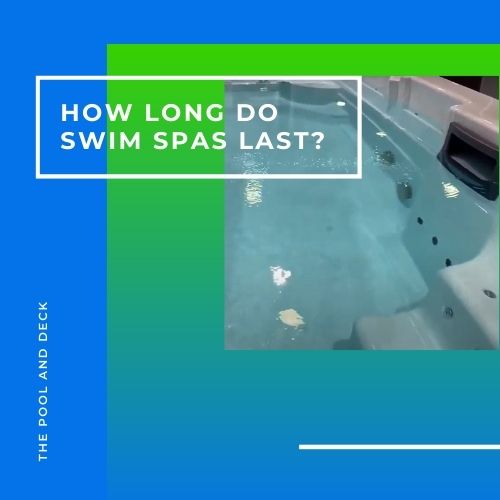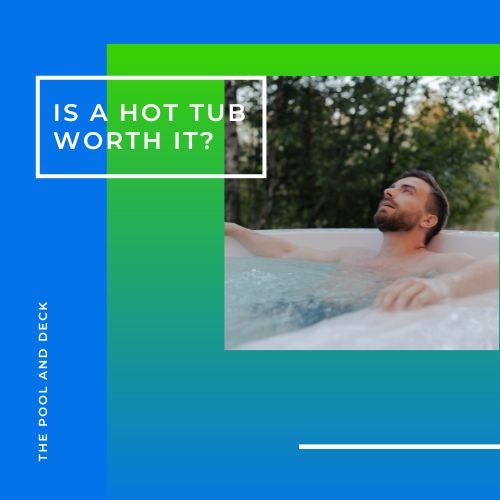How Long Do Swim Spas Last? ( 5 Best Ways to Increase Life!)
As an Amazon Associate, I earn from qualifying purchases.
How Long Do Swim Spas Last?
Are you considering installing a swim spa in your backyard but are concerned how long do swim spas last? A swim spa costs less to install than a family size inground swimming pool. However, the cost at around $30-$40,000 is still substantial. Naturally you would like to know how long do swim spas last?
A good quality swim spa should last for at least 20 years. Of course the actual life will depend not only on the initial quality but also on regular & proper maintenance.
The swim spa manufacturer will likely give you a warranty. The warranty for manufacturing defects may be a few years, certainly not 20 years. Regular & proper maintenance will help increase the life of your swim spa. But there are a few more ways.

To get a good return on your investment, implement the following 5 best ways to increase the life of your swim spa:
- How Do You Maintain a Swim Spa?
- What Chemicals Do You Need for a Swim Spa?
- How Often Do You Have to Clean a Swim Spa?
- How Often Do You Need to Drain a Swim Spa?
- How Can You Protect Your Swim Spa?
1. How Do You Maintain a Swim Spa?
A swim spa may seem just like a smaller version of an inground swimming pool. In reality the maintenance of a swim spa is a lot more complicated than maintaining an inground swimming pool.
The additional complication arises from the fact that a swim spa has several jets and 3-4 jet pumps, to create the turbulent water current required for swimming. A swimming pool does not have this arrangement.
Most swimming pools are not designed to be heated. You can, of course, attach a pool heater, after the pool filter.
Incorporating a pool heater with a family sized swimming pool will extend the pool season by several weeks. However, heating a family sized swimming pool, holding 30,000 gallons of water is not cheap.
A swim spa, on the other hand, holds only around 6,000 gallons. That is 20% as compared to a swimming pool. Naturally it is cheaper to maintain a heated swim spa.
In fact, a major selling point of a swim spa is that you can use it for most of the year, if not the entire year, due to affordable heating costs.
Regular servicing & maintenance of the key swim spa components namely the jets, pumps, filter & heater will reduce chances of a major failure. It will keep your repair costs down and increase the lifespan of the swim spa.
2. What Chemicals Do You Need for a Swim Spa?
Maintaining healthy water chemistry in your swim spa will go a long way in increasing the life of your swim spa. It will also ensure the safety and health of the swim spa users.
To keep the water chemistry of the swim spa within the recommended range you need the same chemicals that you would require for a regular spa, hot tub or a swimming pool.
A chlorine or bromine sanitizer is essential for maintaining bacteria & algae free water. Chlorine sanitizers work better with a swim spa but you can use bromine as well.
The swim spa circulation pump & filter has to work less hard, if the algae growth is kept within control. Keeping swim spa bacteria levels in control is essential to ensure swimmers do not suffer from any water borne diseases.
In addition, you also need to maintain the pH, total alkalinity & calcium hardness levels within the recommended range. The recommended range for the swim spa water chemistry parameters are in the table below:
| Parameter | Acceptable Range | Ideal range |
| Chlorine Level | 1.0 – 4.0 ppm | 2.0 – 3.0 ppm |
| pH Level | 7.2 – 7.8 | 7.4 – 7.6 |
| Alkalinity | 80 – 150 ppm | 80 – 120 ppm |
| Calcium Hardness | 150 – 400 ppm | 200 – 300 ppm |
Swim spa water with lower than recommended pH level will be acidic. It will corrode the metallic parts, such as jets, pipelines, pump, filter & heater assembly, of the swim spa system.
Higher than recommended calcium hardness level will result in scale formation & calcium deposits. The swim spa surface will no longer be as smooth as it used to be. The rough surface is not only an eyesore but also gives a foothold to algae & pathogens to latch on and grow.
Calcium deposits in the swim spa circulation system can partially block the jets & pipelines. This increases the workload on the pumps. The life of the pumps will come down.
TIP: Installing an ozonator can reduce the consumption of chlorine sanitizer. Ozone in the swim spa water breaks down the contaminants by oxidizing them, reducing the sanitizer requirement.
3. How Often Do You Have to Clean a Swim Spa?
Keeping your swim spa clean is a continuous process. Cleaning the swim spa on a regular basis will increase its life. A clean swim spa is also necessary for a satisfying user experience.
Every swim spa has skimmer baskets that trap floating debris and prevent it from entering the pump & filter. You should remove and clean the skimmer basket regularly.
If not done, the skimmer basket will begin to clog up with leaves, hair, etc. The pump will have a hard time circulating the water through the filter. The life of the pump will be reduced.
The swim spa filter traps the smaller contaminants dissolved in the water. Over time the contaminants will start clogging up the filter. The pump pressure will start rising and the filtration effectiveness will start coming down.
To prevent the overloading of the circulation pump, remove and clean out the swim spa filter at least once a month. Usually flushing them with a garden hose will get them clean enough.
However, deep clean the swim spa filter, every 3 to 4 months. Soak the spa filter overnight in a bucket full of filter cleaner. The filters should be really clean the next morning.
The water filter should also be replaced every year so that it remains effective.
Often people entering the swim spa will have sand or grit on their feet. This settles to the bottom. If not removed it will abrade the floor and seats of the swim spa over a period of time.
To prevent this you must vacuum the swim spa floor & seats once a week.
4. How Often Do You Need to Drain a Swim Spa?
You need to drain a swim spa every 4 to 6 months. Using sanitizers & shock at recommended frequency & levels, will go only so far. In 4 to 6 months, you will realize that further addition of chemicals is not getting your swim spa water to the recommended levels.
Draining, cleaning & refilling of the swim spa is like setting clicking on the reset button of a computer. You can bring the complete water chemistry back to the starting point.
The water test readings will give you an indication if it is time to drain the swim spa. If the readings are not changing much, in spite of the addition of chemicals, then it is time to drain.
Sometimes the color of the spa water is also a good indicator. Swim spa water should be crystal clear. Some colors such as green, pink, white, gray or black, are indicators that mold or algae have taken hold of your swim spa.
In such a situation, the most effective remedial action is to shock your swim spa to kill the pathogens and then drain it to remove them from the system.
Draining the swim spa also gives you the opportunity to do a thorough clean of the jets and pipelines. Once your spa has been drained, use a shop vac to blow air through each of the jets. It will clean out the jets and the pipeline.
Take this opportunity to remove any scale buildup too!
5. How Can You Protect Your Swim Spa?
You can protect your swim spa from the elements by keeping it under covers when not in use. A good cover will protect your swim spa from dust, yard debris, UV radiation, rain and snow.
Protection from the elements will surely extend the life of your swim spa.
A swim spa cover will also prevent heat loss due to evaporation. A safety cover also protects your kids and pets from accidentally falling into the swim spa.
Having a fence protects the swim spa from intruders as well as unwary children and pets. A solid fence, especially made of glass, can add class to your swim spa while reducing evaporation losses due to wind.
How Much Does It Cost to Maintain a Swim Spa?
You can expect to spend between $75-$150 a month for the basic operation of your swim spa. Of this, around 20 to 30% will be on account of chemicals and the balance for energy costs.
In addition you must budget $100-$150 per month, for repairs and parts replacement. You may use less money in the initial years but you can expect it to go up as your swim spa gets older.
By following the above five best ways you will not only increase the life of your spa but will also potentially reduce the cost of major repairs.
Thank you very much for reading the post. I do hope you found it informative and helpful.






